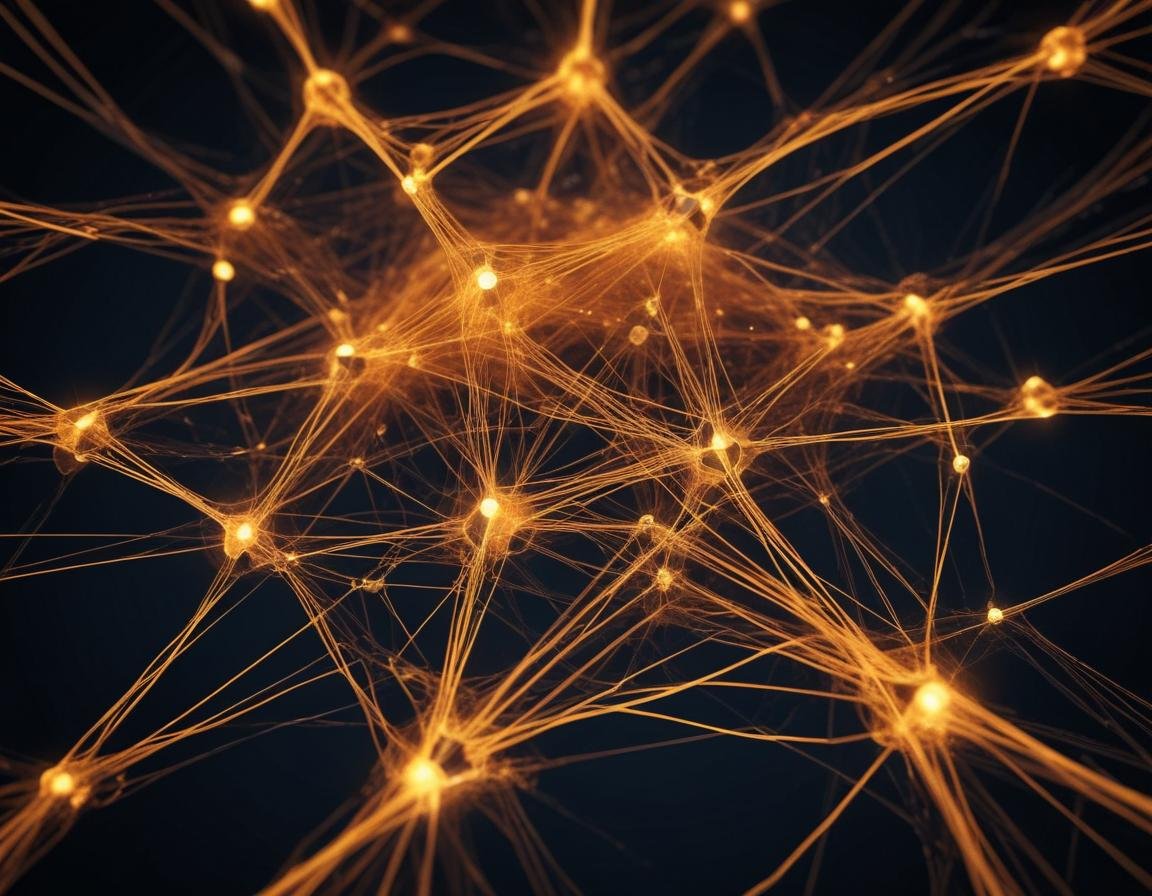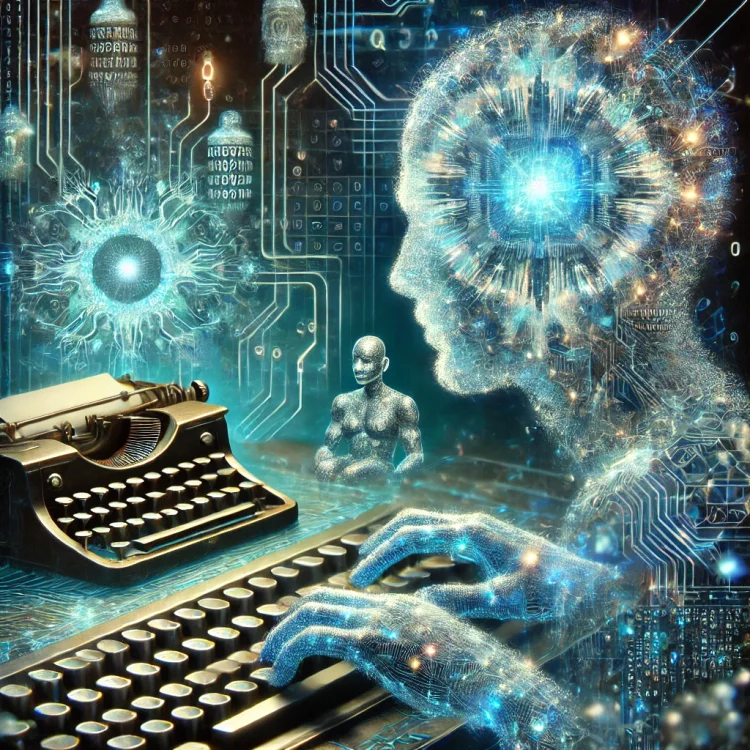
The Dead Internet Theory: A Digital Ghost Town or a New Reality?
 The internet is deeply embedded in modern life, serving as a platform for communication, commerce, education, and entertainment. However, the Dead Internet Theory questions the authenticity of this digital ecosystem. Proponents suggest that much of the internet is no longer powered by genuine human activity but by bots, AI-generated content, and automated systems. This article delves into the theory, its claims, evidence, counterarguments, and broader implications.
The internet is deeply embedded in modern life, serving as a platform for communication, commerce, education, and entertainment. However, the Dead Internet Theory questions the authenticity of this digital ecosystem. Proponents suggest that much of the internet is no longer powered by genuine human activity but by bots, AI-generated content, and automated systems. This article delves into the theory, its claims, evidence, counterarguments, and broader implications.
Understanding the Dead Internet Theory
The Dead Internet Theory posits that a substantial portion of online activity is generated not by humans but by automated scripts and artificial intelligence. This transformation, theorists argue, has turned the internet into an artificial space designed to simulate engagement, drive corporate profits, and influence public opinion.
Key Claims of the Theory
-
Bots Dominate the Internet:
- Proponents claim that bots outnumber humans online, performing tasks like posting on forums, sharing social media content, and even engaging in conversations.
-
AI-Generated Content:
- Vast amounts of internet content, such as articles, blog posts, and comments, are said to be created by AI systems. This inundation makes it increasingly difficult to identify authentic human contributions.
-
Decline in Human Interaction:
- Critics of the modern internet note a reduction in meaningful human connections, with many interactions feeling repetitive or shallow.
-
Corporate and Government Manipulation:
- Some proponents argue that corporations and governments intentionally populate the internet with artificial content to control narratives, maximize ad revenue, and monitor public discourse.
-
The Internet "Died" in the Mid-2010s:
- Many point to the mid-2010s as the turning point, coinciding with the rise of sophisticated AI and machine learning tools capable of mimicking human behavior convincingly.
Evidence Cited by Supporters
- Proliferation of Bots: Platforms like Twitter and Instagram are rife with fake accounts. Proponents argue that the sheer volume of these bots demonstrates their dominance.
- Automated Content Creation: AI systems like GPT-4 generate text indistinguishable from human writing, leading to fears that they contribute significantly to online content.
- Artificial Virality: Trends and viral posts sometimes appear orchestrated, as though designed to achieve maximum engagement rather than arising organically.
Counterarguments to the Dead Internet Theory
While intriguing, the Dead Internet Theory has several weaknesses that critics are quick to point out:
-
Bots Are Present but Contained:
- Bots undoubtedly exist, but platforms actively monitor and remove them. For instance, Twitter’s regular purges of fake accounts show that bots, while significant, do not dominate.
-
Human Behavior Drives Patterns:
- Algorithms amplify popular posts, often creating the illusion of orchestrated behavior. This predictability can explain repetitive trends without invoking bots.
-
AI Content Is Transparent:
- Much of the AI-generated content is clearly labeled or limited to specific use cases, such as automated customer service or news aggregation. There is no widespread evidence that AI is covertly masquerading as humans.
-
The Internet’s Complexity:
- The diversity of the internet makes it implausible for a single entity to simulate global activity convincingly. Authentic human communities thrive on platforms like Discord, Reddit, and independent blogs.
-
Algorithms, Not Deception, Shape Content:
- Engagement-focused algorithms often prioritize content that generates clicks, which can lead to shallow, viral trends. This phenomenon reflects corporate interests rather than an intentional effort to suppress human participation.
-
Cognitive Biases Shape Perceptions:
- The tendency to overgeneralize from negative experiences can lead to the belief that the internet is "dead." Encounters with spam or low-effort content often overshadow meaningful interactions.
Testing AI vs. Human Interactions: Human or Not?
The Human or Not website offers a practical way to explore the boundary between human and artificial interactions. Users engage in chats and guess whether their conversational partner is a human or an AI bot. For example, a bot might respond to a question about hobbies with, "I enjoy painting because it’s calming." While this seems plausible, deeper engagement often reveals limitations in nuance or context, exposing the bot.
In another instance, a human participant might share personal anecdotes, such as a memory of painting outdoors during a childhood trip, which adds emotional depth and a specific context that most bots currently struggle to replicate. Similarly, a bot might fail to provide meaningful responses when asked about abstract topics like "What does art mean to you?" or "How do you interpret the role of creativity in society?"
This platform highlights how advanced AI systems have become and underscores the challenge of distinguishing between genuine and artificial behavior—a core concern of the Dead Internet Theory.
The Human or Not website offers a practical way to explore the boundary between human and artificial interactions. Users engage in chats and guess whether their conversational partner is a human or an AI bot. For example, a bot might respond to a question about hobbies with, "I enjoy painting because it’s calming." While this seems plausible, deeper engagement often reveals limitations in nuance or context, exposing the bot.
This platform highlights how advanced AI systems have become and underscores the challenge of distinguishing between genuine and artificial behavior—a core concern of the Dead Internet Theory.
Alan Turing and the Turing Test
The Dead Internet Theory inevitably invokes the legacy of Alan Turing, a pioneer in computing and artificial intelligence. Turing’s contributions extended far beyond theoretical ideas; he laid the groundwork for modern computing with the invention of the Turing Machine, a conceptual framework for algorithmic processes that remains a foundation of computer science.
One of Turing’s most enduring legacies is the Turing Test, a method designed to evaluate a machine’s ability to exhibit behavior indistinguishable from a human. In this test, a human evaluator interacts with both a machine and a human through a text-based interface. If the evaluator cannot reliably differentiate between the two, the machine is said to have "passed" the test. While the Turing Test is not a perfect measure of artificial intelligence, it set the stage for the development of conversational agents and the broader study of machine learning.
Turing’s work was instrumental in breaking the German Enigma code during World War II, an achievement that significantly influenced the outcome of the war. His efforts at Bletchley Park showcased the practical applications of computational thinking, blending theoretical insights with real-world problem-solving.
Beyond his technical achievements, Turing’s life story has inspired countless discussions about the ethics of AI and human rights. Despite his groundbreaking contributions, Turing faced persecution due to his sexuality, a tragic chapter that underscores the importance of inclusion and diversity in the scientific community.
Turing’s vision continues to inspire advancements in AI, sparking philosophical debates about intelligence, consciousness, and the ethical implications of creating machines that mimic human behavior. His legacy reminds us that the questions surrounding AI—both its possibilities and its risks—are as relevant today as they were in his time.
The Dead Internet Theory inevitably invokes the legacy of Alan Turing, a pioneer in computing and artificial intelligence. His most famous contribution, the Turing Test, was designed to determine whether a machine could exhibit behavior indistinguishable from a human.
In the Turing Test, a human evaluator engages with two entities—one human and one machine—without knowing which is which. If the evaluator cannot reliably tell them apart, the machine is said to have "passed." This benchmark remains a foundational concept in AI research, symbolizing the quest for machines that emulate human thought and interaction.
Turing’s groundbreaking work laid the foundation for modern AI and sparked philosophical debates about the nature of intelligence and authenticity. His vision continues to inspire both advancements in AI and critical questions about its societal impact.
Why Does the Theory Resonate?
The Dead Internet Theory reflects growing concerns about authenticity and manipulation in digital spaces. As AI technologies become more sophisticated, fears about artificial content displacing genuine human voices intensify. The theory also taps into frustrations with the commercialization of the internet, where algorithms prioritize profit over meaningful interactions.
For many, the theory is a metaphor for their disillusionment. The internet, once a space for creativity and exploration, now feels dominated by ads, data harvesting, and shallow content.
A Manufactured Reality or Misplaced Fear?
The Dead Internet Theory raises valid questions about the role of automation and AI in shaping online experiences. However, the internet remains a space where human creativity, community, and interaction persist. The challenges posed by bots and AI are real, but they are counterbalanced by ongoing efforts to ensure authenticity and transparency.
Whether the theory holds merit or simply reflects anxieties about the digital age, it underscores the need for critical engagement with the technologies that increasingly mediate our lives online. The future of the internet depends on our ability to navigate these complexities and preserve the human element in digital spaces.

Recommended Comments